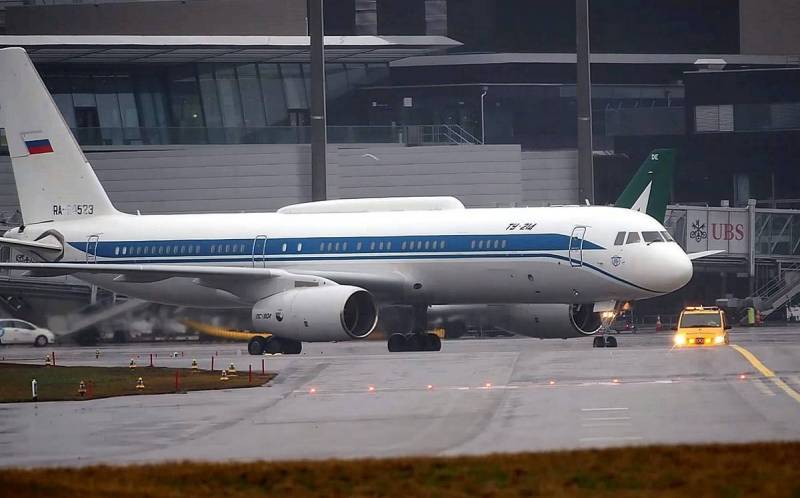It flies and fights: what are the prospects for the Tu-214 medium-haul airliner
It became known about the start of serial production at the Kazan Aircraft Building Plant of the Tu-214 medium-haul airliner. In the domestic press, this decision is usually called a temporary measure, but there is every reason to believe that the Soviet aircraft will still fly and fight in the literal and figurative sense.
Let's fly again
When in previous, pre-sanction years we raised question about the need for parallel production of MS-21 and Tu-204/214, this caused almost hysteria among a certain audience. The Soviet liner was declared completely obsolete and terribly inefficient against the backdrop of the promising modern MS-21. However, in actual fact, everything turned out to be not so obvious and unambiguous.
Yes, the MS-21 is indeed fully competitive with its Western counterparts in terms of its characteristics, and even surpasses them in some ways. But it was designed with the expectation of broad international cooperation, so there are at least half of foreign components in it. We are threatening to promptly replace them with imports, but often the deadlines for the implementation of high-tech projects in our country tend to shift to the right. Undoubtedly, sooner or later, the MS-21 will be brought to mind and put on the conveyor, but rather later. It is required to replace about 700 foreign-made liners in the next one or two decades.
What is good in comparison with the Tu-204/214? The fact that the Soviet liner is assembled entirely from domestic components. Today, in the context of sectoral Western sanctions, this moment is of fundamental importance from the point of view of national security. It should be noted that foreign competitors have already planted a Tu-204/214 pig with their unscrupulous methods.
Thus, the American company Pratt & Whitney got into the work of Perm Motors by purchasing a blocking stake. At first, competitors wanted to show through merciless tests that our engine was not good enough, but they did not achieve the desired result. Then, under a plausible pretext to improve the PS-90 gas generator, they allowed their patented Technology, and then began to prevent the improved PS-90A engine from entering the market. Only in 2011, the Americans were squeezed out of Perm, and the shares of the manufacturing company went to the United Aircraft Corporation. However, the litigation continued, and time was lost. After the tragic events near Yaroslavl in 2011, the Russian sky was opened to Western manufacturers, and it was almost completely filled, divided among themselves, by Boeing and Airbus.
Detractors argue that the Tu-204/214 is uncompetitive in front of them due to lower fuel efficiency and the presence of three crew members versus two on modern aircraft. But there are nuances. For comparison: the Airbus A-321 consumes aviation kerosene less than the domestic airliner, by as much as 3,9%, while it costs from 87 to 93 million dollars, depending on the modification, against 30 million for the Tu-204/214. The need to pay a salary also to a flight engineer is unlikely to ruin the air carriers, but objectively makes the operation of a passenger aircraft over long distances safer. This is some fun math.
As for the prospects for internal competition between the MS-21 and Tu-204/214, it will not actually exist. From a recent statement by the head of the UAC, Yuri Slyusar shouldthat the Soviet liner will have two new versions that will fill important market niches:
We are making a cargo and shortened version for flights to the Far East. We will increase gradually.
In a shortened version, the Tu-214 will be able to cover up to 9 km, this liner will be based on its half-brother Tu-204-300, also known as the Tu-234 with an increased flight range. Its passenger capacity is 166 people, and the cabin was originally designed for two crew members, which is what air carriers require. The cargo version of the Tu-214, apparently, will be built on the basis of one of the modifications of the Tu-200S, probably the Tu-204-120CE.
Let's fight again
It is equally important that in our turbulent times, the Soviet liner will be able to find application in military affairs. It is no secret that several modifications have already been created on the basis of the Tu-204/214 specifically for law enforcement agencies: two Tu-214R integrated reconnaissance aircraft, two Tu-214ON reconnaissance aircraft built for observation flights under the Open Skies international treaty, as well as Tu- 214 in the variants of the control center, repeater and communication center for the special flight squad "Russia".
Tu-204/214 back in 2020 attracted the attention of the Ministry of Defense of the Russian Federation as a platform for a new anti-submarine aviation complex (PLAK) to replace the few aging Il-38 and Tu-142 anti-submarine aircraft. The medium-haul airliner is close in its tactical and technical characteristics to the Boeing 737-800, on the basis of which the American P-8 Poseidon patrol aircraft were created. It can also serve as a platform for building an AWACS aircraft.
Thus, the idea of the Tu-204/214 as some kind of temporary solution does not correspond to reality.

Information